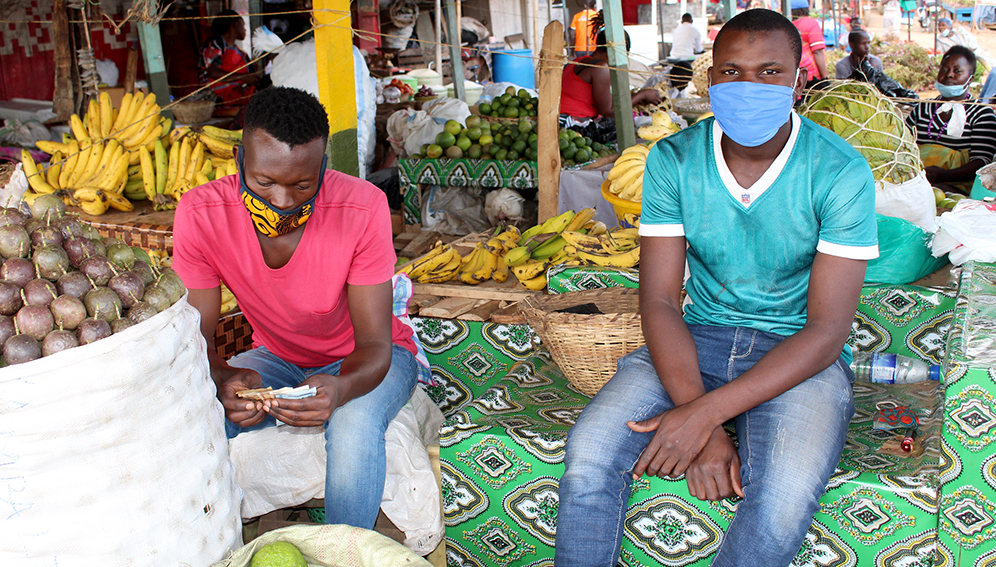12/05/23
Poor at risk as COVID-19 ‘emergency’ ends – experts

By: Dann Okoth
Send to a friend
The details you provide on this page will not be used to send unsolicited email, and will not be sold to a 3rd party. See privacy policy.
The lifting of international emergency status for COVID-19 could pose serious challenges for global South countries in managing the virus, health experts caution.
The World Health Organization (WHO) ended the Public Health Emergency of International Concern (PHEIC) status for COVID-19 on 5 May, more than three years after it was declared, saying the virus was now “an established and ongoing health issue”.
It said the decision was based on declining COVID-related deaths, hospitalisations, and intensive care unit admissions, plus rising population immunity to SARS-CoV-2.
“LMICs, especially in Africa, must now take matters into their own hands and come up with local solutions,”
Mohga Kamal-Yanni, policy co-lead, People’s Vaccine Alliance
PHEIC declarations are helpful for resource mobilisation and access, and accelerate the development and authorisation of diagnostics, therapeutics and vaccination.
So the lifting of the PHEIC could have implications for low- and middle-income countries’ (LMICs) access to resources, as well as national health spending priorities.
Francisca Mutapi, professor of global health infection and immunity and co-director of the University of Edinburgh’s Global Health Academy, says COVID-19 is still a global public health problem and people in LMICs will continue to die from the disease.
“However, any future waves are not expected to be as explosive as in 2020 and 2021,” she told SciDev.Net, adding: “This is largely due to build-up of herd immunity from vaccination and natural infection.”
She noted that the lifting of the PHEIC may jeopardise ongoing interventions, including plans to manufacture cheaper COVID-19 vaccines in developing countries.
“There is a danger that when authorities appear less concerned by the disease, there is less drive to deliver vaccines and also less enthusiasm from members of the public to get vaccinated,” Mutapi said.
“There is need to continue building the vaccine production and deployment pathways to ensure the capacity is available for future pandemics.”
Between 2007 and 2023, seven disease outbreaks have been declared as PHEICs, with differing responses each time.
Mutapi believes there is a need to review and refine when and how the declaration is used, to promote better pandemic responses in all countries.
COVID access gaps
Fifa A. Rahman, principal consultant at Matahari Global Solutions, a health research and policy group working on integrating global South expertise in international health initiatives, said that while the PHEIC announcement was expected, many gaps remain in access to COVID-19 tools in LMICs.
“For example, there’s ongoing work on self-tests’ integration into primary healthcare settings in LMICs that may be stalled because the end of the PHEIC may lead to complete deprioritisation of COVID-19 at the policy and decision-making level,” she told SciDev.Net.
Rahman points out that many countries still do not have robust access programmes involving the antiviral treatment Paxlovid for priority populations who may still be hospitalised with COVID-19 infection.
“It is important, therefore, for countries to continue ensuring access to such COVID tools for at-risk populations despite the PHEIC announcement,” she said.
“So, while the end of the PHEIC makes sense given where we’re at with fatalities, financing, and other key factors, there needs to be sustained work to ensure that tools are taken up and integrated within health systems.”
The WHO says countries should maintain efforts to increase COVID-19 vaccination coverage for people in high-priority groups.
Kate O’Brien, director of the WHO’s immunisations, vaccines and biologicals department, told a press briefing last week (5 May)*: “What’s really important about declaring the standing down of the public health emergency is that the vaccine effort does not end here.”
She said the WHO was still committed to supporting countries in broadening vaccine coverage and that the COVAX vaccine facility, aimed at ensuring equitable access, would remain in operation for the rest of this year.
“We continue to have cases and deaths and the work isn’t over,” she said.
“Coverage of those individuals who are at high risk of serious illness and of death is still far too low in so many countries around Africa and in other parts of the world […].”
Mohga Kamal-Yanni, policy co-lead for the People’s Vaccine Alliance, a global coalition of civil society organisations campaigning for health justice, said LMICs needed assurance of a sustained supply of COVID-19 tools such as vaccines and medicines despite the lifting of the PHEIC.
“More importantly, LMICs, especially in Africa, must now take matters into their own hands and come up with local solutions,” she said.
“They need to push for the removal of intellectual properties on COVID-19 vaccines and invest in local manufacturing of the vaccines.”
*This article was edited on 13 May 2023 to change “this week” to “last week”.
This piece was produced by SciDev.Net’s Global desk.



